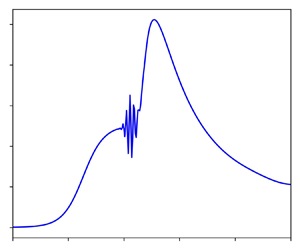No CrossRef data available.
Article contents
Wave packets in laminar supersonic flow over an axisymmetric compression corner
Published online by Cambridge University Press: 19 December 2024
Abstract

The problem of axisymmetric supersonic laminar flow separation over a compression corner has not been considered within the framework of triple-deck theory for several decades, despite significant advances in both theoretical methods and numerical techniques. In this study, we revisit the problem considered by Gittler & Kluwick (J. Fluid Mech., vol. 179, 1987, pp. 469–487), using the numerical method of Ruban (Zhurnal Vychislitel'noi Matematiki i Matematicheskoi Fiziki, vol. 18, issue 5, 1978, pp. 1253–1265) and Cassel et al. (J. Fluid Mech., vol. 300, 1995, pp. 265–285), termed the Ruban–Cassel method (RCM). The solution shows good agreement with the results of Gittler & Kluwick (J. Fluid Mech., vol. 179, 1987, pp. 469–487) for a scale external radius of 1 and scale angles from 1 to 6. However, for scale angles above 6.8, a wave packet appears. This wave packet is similar to that reported by Cassel et al. (J. Fluid Mech., vol. 300, 1995, pp. 265–285) for two-dimensional supersonic flow. As the external scale radius increases (from 1 to 10), the axisymmetric solution converges towards the two-dimensional solution for equivalent scale angle values. For a scale external radius of 10, the wave packet appears at a scale angle of 3.8, compared with the value of 3.9 by Cassel et al. (J. Fluid Mech., vol. 300, 1995, pp. 265–285). Inspection of the velocity profiles reveals that inflection points, while ubiquitous in shear flow, do not seem to play a relevant role in the appearance of the wave packet for the axisymmetric flow. Axisymmetric effects become more important as the scale external radius decreases below 0.5. A larger scale angle is necessary to produce a flow structure equivalent to that of the two-dimensional case. For scale external radius 0.1, the pressure gradient is substantially diminished and the solution is devoid of a second shear-stress minimum.
- Type
- JFM Papers
- Information
- Copyright
- © The Author(s), 2024. Published by Cambridge University Press



